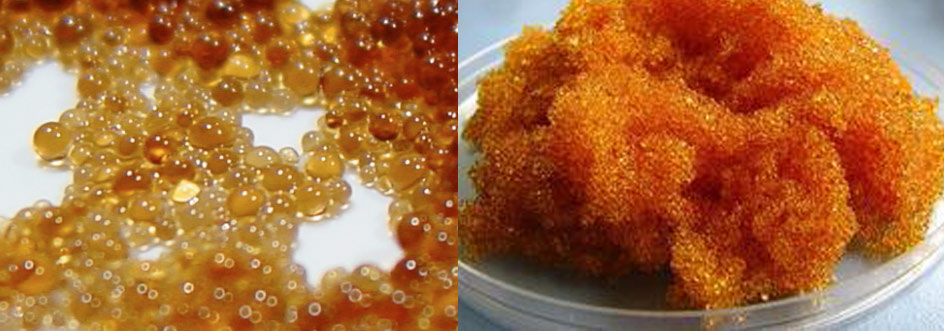Ion exchange Resin
Ion exchange is a reversible chemical reaction where dissolved ions are removed from solution and replaced with other ions of the same or similar electrical charge. Not a chemical reactant in and of itself, IX resin is instead a physical medium that facilitates ion exchange reactions. The resin itself is composed of organic polymers that form a network of hydrocarbons. Throughout the polymer matrix are ion exchange sites, where so-called “functional groups” of either positively-charged ions (cations) or negatively-charged ions (anions) are affixed to the polymer network. These functional groups readily attract ions of an opposing charge.
Ion-exchange resin, any of a wide variety of organic compounds synthetically polymerized and containing positively or negatively charged sites that can attract an ion of opposite charge from a surrounding solution. The resins commonly consist of a styrene-divinylbenzene copolymer (high molecular weight substance), although other compositions, such as methacrylic acid–divinylbenzene and phenol-formaldehyde polymers, are also employed. The electrically charged groups are commonly sulfonic or carboxylic acid salts or quaternary ammonium salts. Polymers containing acid groups are classified as acid, or cation, exchangers because they exchange positively charged ions, such as hydrogen ions and metal ions; those containing ammonium groups are considered basic, or anion, exchangers because they exchange negatively charged ions, usually hydroxide ions or halide ions.
Two separate types of resins are commonly classed as ion-exchange resins, although their functions do not involve an interchange of ions. These are the chelating resins and the electron-exchange resins. Chelating resins are styrene-divinylbenzene polymers to which iminodiacetate groups are introduced. This functional group forms complexes with all the metallic elements except the alkali metals, with stabilities that vary with the different metals; in analytical chemistry, they are used for the separation of trace amounts of metals. Electron-exchange resins accept or donate electrons to the surrounding solution and are used in oxidation-reduction reactions; examples include polymers prepared from hydroquinone, phenol, and formaldehyde.

